Bartolomé Esteban Murillo
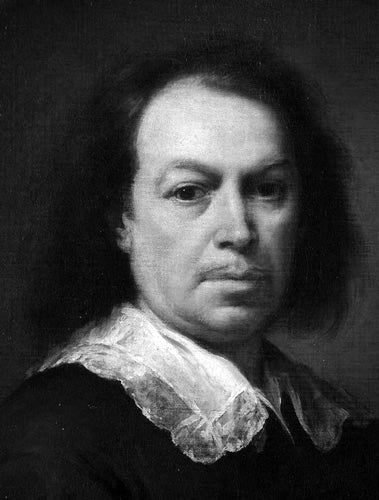
| Full name: | Bartolomé Esteban Murillo. |
|---|---|
| Birth: | 1617, Seville, Spain. |
| Death: | 1682, Seville. |
| Style: | Baroque, naturalism |
Murillo was a Sevillian painter, a great figure of the baroque and a master of tenebrist, naturalist, and chiaroscuro techniques. The biographical data we have about him is not very abundant or precise, often with contradictions among historians, especially regarding the trips he made to other European cities; and in terms of dates, both of his biography and his works.
Confirmed data about Murillo include: he was born in Seville in the second decade of the 17th century, into a well-off but not especially wealthy family, and became an orphan at around 9 years old, going to live with his sister and brother-in-law, staying in that house until the day of his wedding. 10 years later, he became a widower and never remarried. With his wife, he had about 9 children, of whom between 3 and 5 died during childhood.
It is unclear whether he traveled outside Seville for his painting training, what is certain is that Murillo did not spend any long periods of his life outside his hometown, but he did make sporadic trips to Madrid where he met Velázquez. Experts agree that clear elements of Italian Renaissance can be seen in his compositions, but these can be explained by the strong influence that masters like Zurbarán had, who cultivated various pictorial aspects of the Italian schools of Venice and Bologna. © diCrox.
Murillo's Paintings
Murillo's painting was strongly shaped by the Catholic faith he professed. Also, his orphanhood, the experience of losing several children, lean times, and the plague ravaging the city in the late 1650s, made him develop a great sensitivity towards the disenfranchised and those who suffer most in society, becoming an expert in genre scenes with poor children.
His skill as a painter led him to receive commissions from the highest ranks, and religious works were undoubtedly his forte, as he was able to reflect expressions, feelings, and emotions on faces and bodies like no one else.
This is a representative sample of the genres, themes, and styles developed by the painter during his career:
-
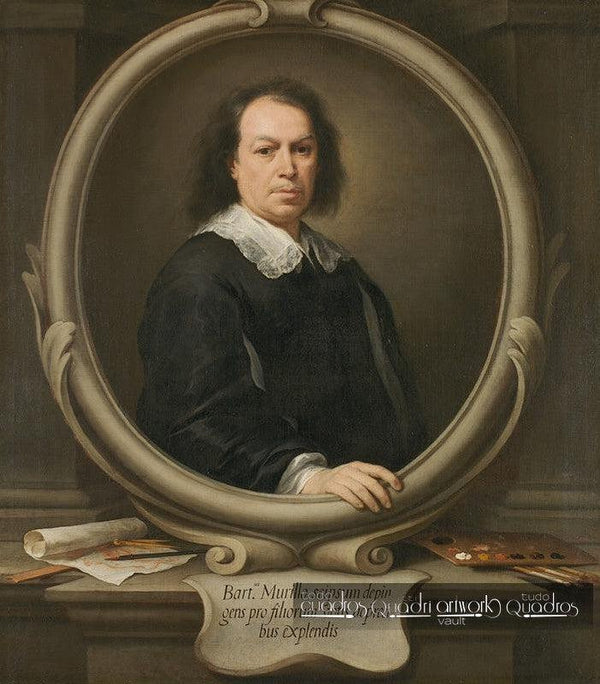
Author: Bartolomé Esteban MurilloYear: circa 1670Genre: PortraitStyle: NaturalistTitle (English): Self PortraitType: PaintingTechnique: OilSupport: CanvasLocated at: National Gallery, LondonThe inscription under the painter's painting reads in Latin: "Bartus Murillo seipsum depingens pro filiorum votis acprecibus explendis", which means "...painting himself at the request of his beloved children".
Although the appearance of the painter is that of a relatively young man, it is believed that the work was painted when the artist was already over 50 years old, a time when his children were old enough to be proud of their father's work.
The composition follows the same pattern as the engravings on the frontispieces of books of the time: the protagonist framed in an oval and beneath it the instruments and tools of his trade: pencils and paper on his left and a palette with brushes on the right.
-
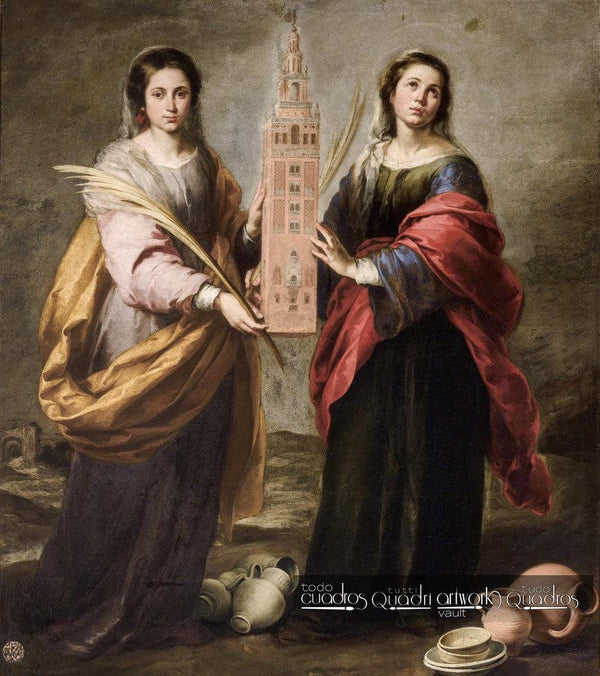
Author: Bartolomé Esteban MurilloYear: 1666Genre: Religious PaintingStyle: BaroqueType: PaintingTechnique: OilSupport: CanvasLocated at: Museum of Fine Arts of SevilleJusta and Rufina are two saints, daughters of a potter, born in the 3rd century in the current territory of Seville, then governed by the Romans. They were martyrs.
In the work, Saint Justa is depicted on the right and Rufina, 2 years younger, on the left. The canvas shows clay pots on the ground, alluding to the family business. The bell tower of Seville, now the Giralda of the Cathedral, is depicted because they are credited with the miracle of keeping it standing during the earthquake of 1504. Also, each holds palms in their hands, indicating their death by martyrdom, which occurred because they refused to acknowledge the Roman gods.
-
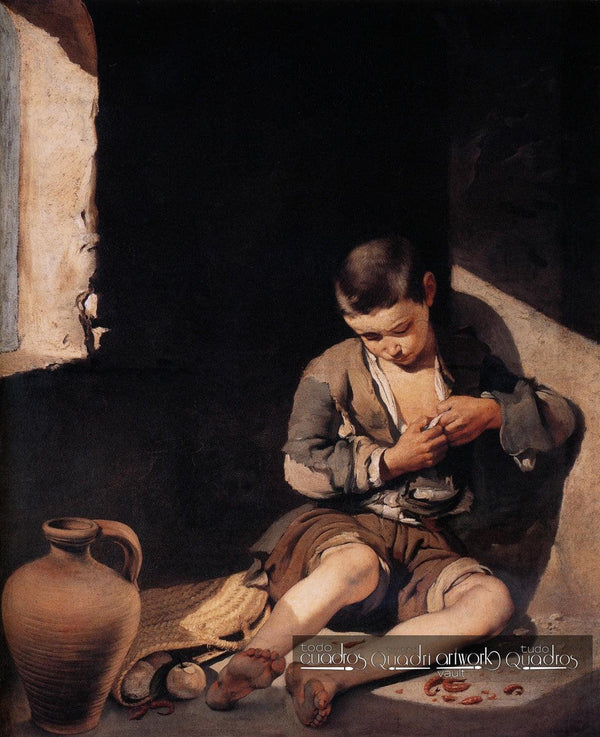
Author: Bartolomé Esteban MurilloAlso known as: Boy Delousing HimselfYear: circa 1650Style: BaroqueGenre: CostumbrismoTitle (French): Le Jeune MendiantType: PaintingTechnique: OilSupport: CanvasLocated at: Louvre Museum, ParisMurillo often portrayed children, doing so with children of all types: Saints in their earliest ages, little angels in religious allegories, and children in genre scenes, as is the case here.
This is one of the artist's most well-known non-religious works, where elements of the Baroque style are notably present, especially in terms of light treatment, chiaroscuro of the composition, where the child appears illuminated in a dark or very gloomy environment.
-
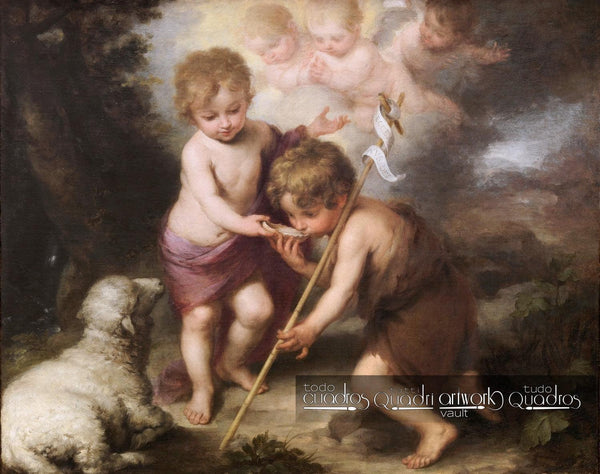
Author: Bartolomé Esteban MurilloYear: circa 1675Style: BaroqueType: PaintingTechnique: OilSupport: CanvasLocated at: Prado Museum, MadridThe two children are John the Baptist and Jesus, with Jesus giving John water to drink from a shell. Although the scene is not biblical, it is a perfectly plausible situation, as both were cousins and close during their childhood.
This is one of the painter's most recognizable works, combining elements in which the artist was most proficient: painting of children and the Baroque style. Thus, he achieved a beautiful and balanced composition that has been reproduced countless times on all kinds of media including prints, t-shirts, and other fashionable and decorative objects.
-
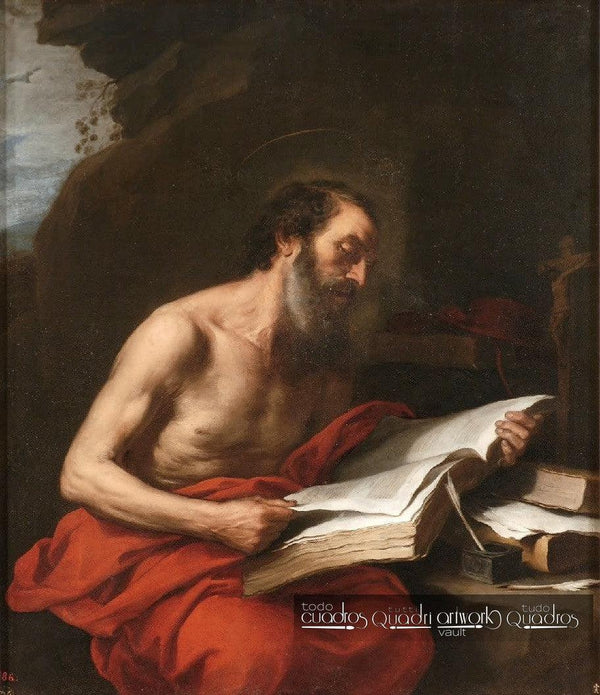
Author: Bartolomé Esteban MurilloYear: circa 1652Style: BaroqueType: PaintingTechnique: OilSupport: CanvasLocated at: Prado Museum, MadridThe work depicts Saint Jerome, who in the 5th century was one of the world's greatest scholars of Hebrew, Latin, and Greek languages. He translated a significant part of the Bible into Latin on the commission of Pope Damasus I. Therefore, the traditional way of representing this Saint is always writing or reading, another of the most famous paintings with this motif is Saint Jerome Writing by Caravaggio.
-

Author: Bartolomé Esteban MurilloYear: 1682Style: BaroqueType: PaintingTechnique: OilSupport: CanvasLocated at: Prado Museum, MadridThis work depicts the death of the Apostle Andrew, considered one of the fathers of both the Catholic and Orthodox churches. The martyrdom took place in the Greek city of Patras, where he was ordered to be crucified (in the form of an X) by the Roman consular delegate Aegeates, who not only witnessed Saint Andrew's preaching and the subsequent Christian conversions but also had his own wife declare herself a Christian, a fact he could not tolerate. He ordered Andrew to be arrested, whipped, and crucified.
The painting was created during Murillo's most advanced artistic phase, in fact, it was completed in the year of his death. This period is characterized by figures that are very diffused and more colorful, resembling some techniques developed in the Renaissance such as sfumato, and others that would take centuries to develop, like the blurring techniques of Impressionism.
-
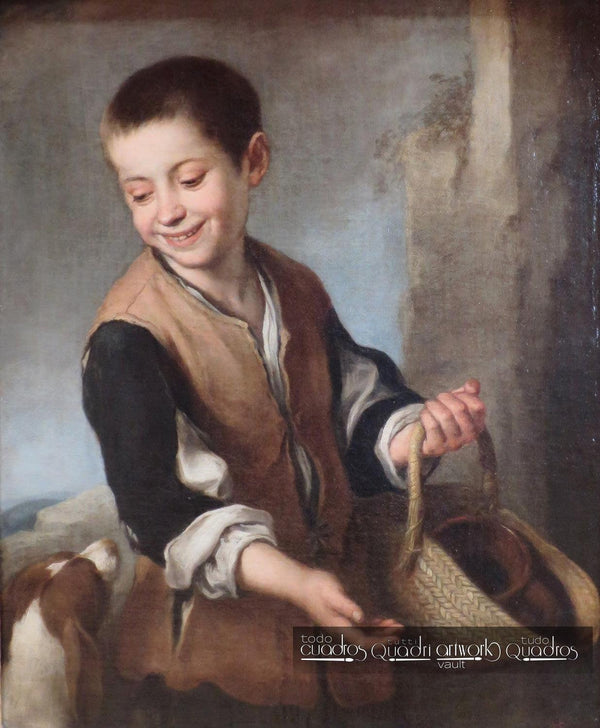
Author: Bartolomé Esteban MurilloYear: circa 1660Style: BaroqueType: PaintingTechnique: OilSupport: CanvasLocated at: Hermitage Museum, Saint Petersburg, RussiaThe artist's predilection for these little ones has to do with losing between 3 and 5 children to illness and that at that time poverty and disease ravaged much of Sevillian society. With the same theme, he portrayed children like this one, scamps and rogues, examples are the titles: "Young Beggar", "Children Eating Grapes and Melon".
-

Author: Bartolomé Esteban MurilloTitle (English): Adoration of the MagiYear: circa 1660Style: BaroqueType: PaintingTechnique: OilSupport: CanvasLocated at: Toledo Museum of Art, USAThis work focuses on the reaction of the magi to the newborn, rather than on the classical and biblical description of the story. They show joy and devotion, reinforcing the solemnity of the moment when the Virgin Mary simply presents the child to them. The moment when the Magi visit the Messiah has been widely treated by various artists of the Renaissance and Baroque periods, one of the most famous versions being "Adoration of the Magi" by Velázquez.
Although the biblical passage is brief, Christian oral tradition has embellished the event with all kinds of details, many of which are reflected in the work. In the upper left, the Star of Bethlehem is visible, the attire of the magi reinforces the universal character of the religion: each one represents a stage of man's life: youth, maturity, and old age; and a different geographic origin (from the 3 continents known at that time): Asia, Africa, and Europe.
-
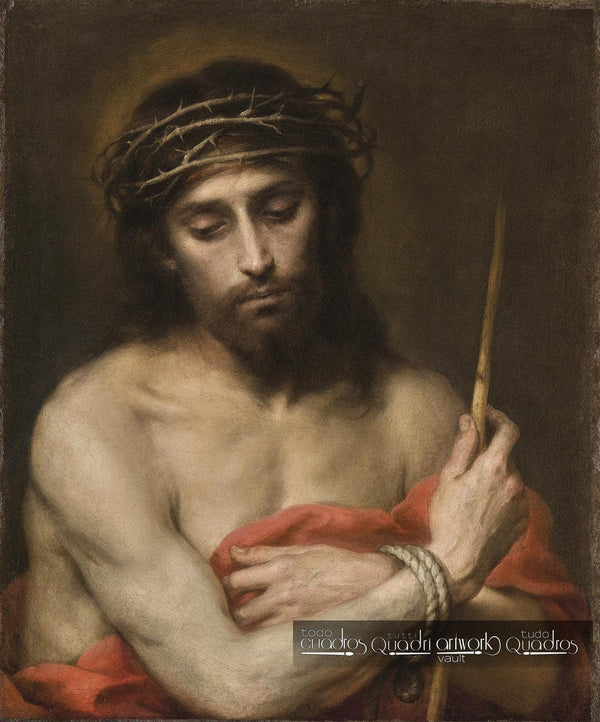
Author: Bartolomé Esteban MurilloYear: circa 1680Genre: Religious PaintingStyle: BaroqueType: PaintingTechnique: OilSupport: CanvasLocated at: Private CollectionThis version of Christ with the crown of thorns is considered the artist's best accomplishment, among several versions of the same title he created. The most notable ones are in the Prado (see) and in the Museum of Cádiz (see).
One of Murillo's most acute skills was his ability to capture emotions and feelings in the faces he painted, which is generously achieved in this portrait.
Currently, this version of Ecce Homo cannot be seen in any museum as it was acquired by a private collector in 2017, who paid nearly 3 million pounds at a Sotheby's auction.
-
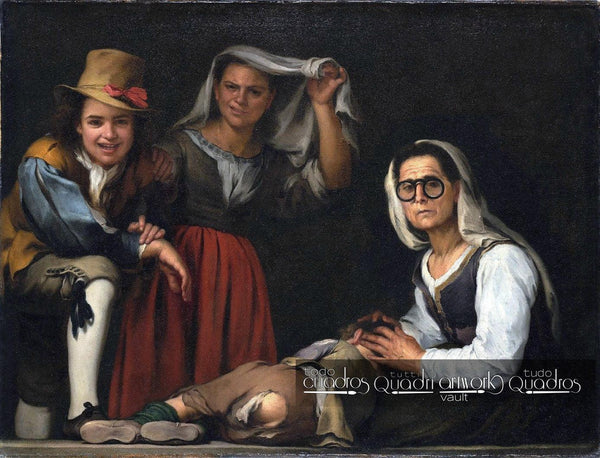
Author: Bartolomé Esteban MurilloYear: circa 1660Genre: CostumbrismoStyle: BaroqueTitle (English): Four Figures on a StepType: PaintingTechnique: OilSupport: CanvasLocated at: Kimbell Art Museum, Texas, USAThis is a genre scene, quite atypical for the time and for the painter. It presents 4 characters, of which the young woman standing in the center of the canvas is the most prominent in the composition. Her half-smile, cheek contraction, and semi-closed eye are believed to signify in this context and time that the girl was single and available. From there, it's inferred that the older woman is the protector of the three children, and especially responsible for finding a husband for the girl.
The boy on the left and the one lying down confirm the picaresque character, one by the expression on his face and the other by the tear in his pants.
-

Author: Bartolomé Esteban MurilloYear: circa 1650Style: BaroqueTitle (German): Trauben- und MelonenesserType: PaintingTechnique: OilSupport: CanvasLocated at: Alte Pinakothek, Munich, GermanyThis genre scene is one of the artist's most famous, featuring typical characteristics of the Baroque style.
It shows 2 well-lit street urchins against a dark background, in action and movement. Both the gazes and the main lines of the composition are diagonal, the detail and realism of the figures are so high that even the grapes on the ground could be a still life of the finest quality. Light enters from the upper left, creating dense shadows towards the opposite corner (chiaroscuro).
-
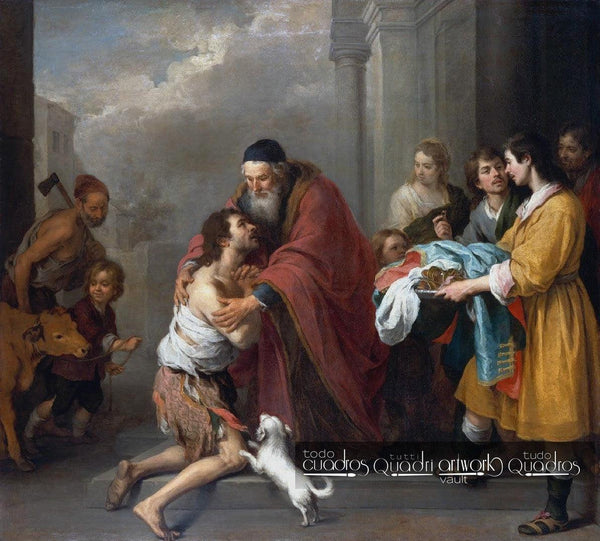
Author: Bartolomé Esteban MurilloYear: circa 1670Style: BaroqueTitle (English): The Return of the Prodigal SonType: PaintingTechnique: OilSupport: CanvasLocated at: National Gallery of Art, Washington, U.S.A.This canvas belongs to the artist's earliest artistic period and was created to decorate the Church and Hospital of Charity in Seville (see on Wikipedia), a hospice established to shelter the most destitute. The father, as a figure of God, receives his son who was lost and now returns. The little dog signifies that the scene is intended to be entirely earthly and not mythological.
This biblical passage has often been painted, and this version is considered one of the best of the period, as it exquisitely captures the facial and bodily expressions of the characters. The composition in terms of color, lighting, and background is reminiscent of works by Titian.
Another famous painting of the same theme is this well-known version by Rembrandt, which features a pronounced Baroque style of the Flemish school.
-
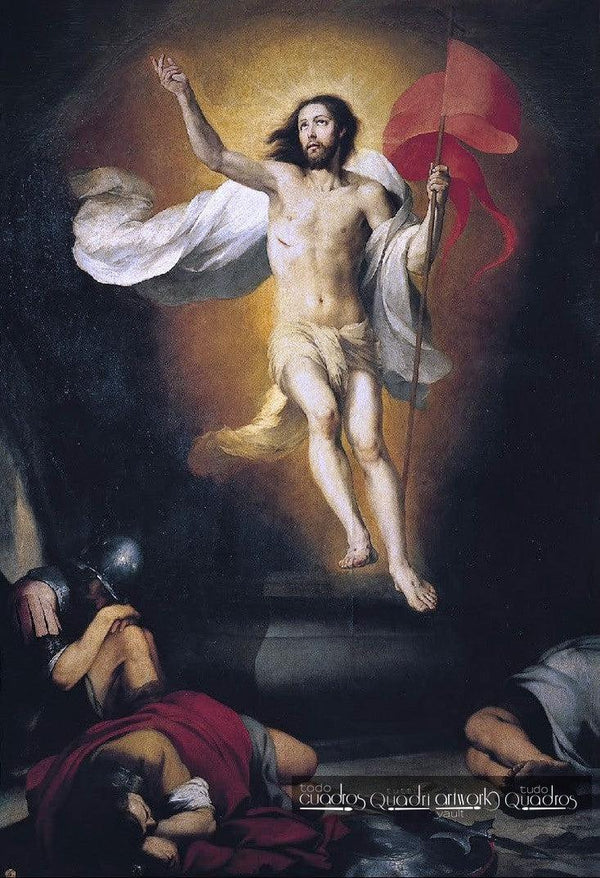
Author: Bartolomé Esteban MurilloYear: circa 1660Genre: Religious PaintingStyle: BaroqueType: PaintingTechnique: OilSupport: CanvasLocated at: Royal Academy of Fine Arts of San Fernando, MadridIt depicts the moment Jesus resurrects and emerges from the tomb while the guards stationed to guard the entrance have fallen asleep. In his hand is the flag of salvation, signifying triumph over death and his call for conversion to both Jews and Gentiles.
This masterpiece features chiaroscuro where the light is directed from the back of the painting towards the viewer, shining brightest right at Jesus's head. He is seen holding the burial shrouds, extending his hand, and looking up towards the father. In the lower part, in shadow, three Roman soldiers sleep on the ground.
-
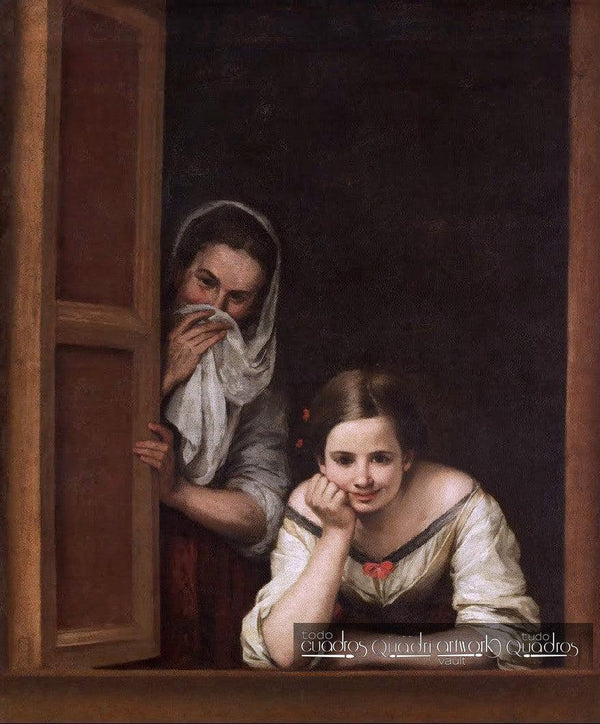
Author: Bartolomé Esteban MurilloYear: circa 1660Style: BaroqueTitle (English): Two Women at a WindowType: PaintingTechnique: OilSupport: CanvasLocated at: National Gallery of Art, Washington, U.S.A.Murillo was an expert at giving his works a halo of charm, nostalgia, and mischief, and this work is a great example. It presents two young women looking through the window, with one of them, completely illuminated in the center, looking at the viewer with an enigmatic and calm smile. Behind her, in half-light, the other young woman covers her eager laughter with a handkerchief. Their attire, typical Spanish of the time, indicates a higher middle-class stratum.
The dimensions of the characters are life-sized, intentionally done so that the painting has more impact as it resembles an actual window with the girls looking out. This pictorial device is commonly found in the Flemish school of the 17th century, for example, in works by Jan van Eyck, Rembrandt, or Rubens.
-

Author: Bartolomé Esteban MurilloYear: circa 1667Style: BaroqueTitle (English): St. Thomas of Villanueva Dividing His Clothes Among Beggar BoysType: PaintingTechnique: OilSupport: CanvasLocated at: Cincinnati Art Museum, Ohio, EE. UU.Santo Tomás de Villanueva (1486-1555) fue un fraile agustino español, canonizado en 1658, reconocido por su sensibilidad hacia los pobres. Aquí se muestra en su más temprana edad repartiendo entre los niños pobres la ropa que llevaba puesta.
En esta obra se comienza a apreciar la tendencia creciente del artista en utilizar el "estilo vaporoso", el cual consiste en difuminar los contornos de las figuras, presentándolas con una ligera apariencia de transparencia, pero sin perder en realismo.
-

Author: Bartolomé Esteban MurilloYear: circa 1655Style: BaroqueType: PaintingTechnique: OilSupport: CanvasLocated at: Prado Museum, MadridEn obra se plasma la devoción religiosa del propio artista. Murillo era católico y pertenecía a la Cofradía del Rosario, quienes practicaban con especial fervor la oración del santo rosario. Por ello se puede ver al niño sosteniendo uno en su mano derecha. La pose de ambos es extremadamente dulce y suave, lo que, unido a la belleza de las caras y la serenidad alegre de las expresiones, resulta una obra sublime, como pocas se han conocido.
La composición muestra características del Tenebrismo, por sus fuertes contrastes de luz, estilo muy utilizado sobre todo en la primera etapa artística del pintor.
-

Author: Bartolomé Esteban MurilloYear: circa 1670Style: BaroqueTitle (English): The Vision of Saint Francis of PaolaType: PaintingTechnique: OilSupport: CanvasSe encuentra en: Museo J. Paul Getty, CaliforniaSan Francisco de Paula fue un fraile y más tarde ermitaño italiano del siglo XV, conocido por vida extremadamente austera. Se presenta aquí en un paisaje de desolación y penumbra, alzando la mirada al cielo, desde donde viene una luz y se lee "Caritas", que significa "Amor". La bola de luz es rodeada por un grácil grupo de 5 angelitos.
-

Author: Bartolomé Esteban MurilloYear: circa 1655Style: BaroqueType: PaintingTechnique: OilSupport: CanvasSe encuentra en: Museo de Bellas Artes de Bilbao, EspañaEsta dramática imagen del apóstol Pedro, corresponde al relato bíblico del llanto que suscita el haber traicionado a su maestro al negarlo tres veces. A su vez tiene las manos entrelazadas como rogando perdón. El óleo tiene los elementos clásicos del claroscuro barroco, un fondo sombrío y una luz que baja en diagonal, contorneando las figuras y especialmente el rostro del personaje
Ya en los primeros años, la autoría de la obra fue discutida, llegando a afirmarse que fue hecha por José de Ribera, aunque pronto quedó aclarado el asunto, queda patente la fuerte influencia que este tuvo en esta y otros trabajos del autor.
Pídela en la sección de cuadros de Murillo al óleo
Famous painters relacionados:
↑Subir
